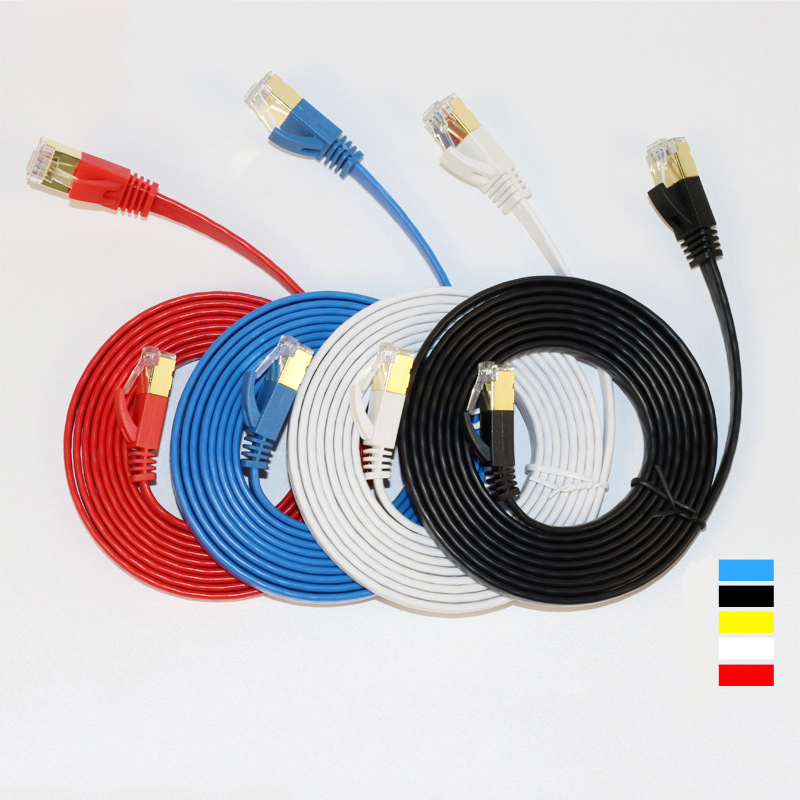Ethernet cables are the lifeline of modern networks, enabling reliable and high-speed data transmission between devices. In this comprehensive guide, we will explore everything you need to know about Ethernet cables, including their types, functionalities, and their crucial role in building robust network infrastructures.

1. What are Ethernet Cables?
Ethernet cables, also known as network cables or LAN cables, are essential components of wired computer networks. They are primarily used to connect devices such as computers, routers, switches, and servers to create local area networks (LANs) or wide area networks (WANs).These cables consist of copper or fiber optic wires that carry electrical signals, forming a physical connection between different devices. By transmitting data packets through these cables, network devices can communicate with each other, enabling seamless data transfer and internet connectivity.
2. Types of Ethernet Cables
There are several types of Ethernet cables available, each with its own specific characteristics and uses. The most commonly used categories include:
a. Cat 5e: Cat 5e cables are widely used for basic network connections and support speeds up to 1 Gigabit per second (Gbps). They are suitable for home networks or small office setups.
b. Cat 6: Cat 6 cables offer improved performance and are capable of transmitting data at speeds up to 10 Gbps. They are commonly used in larger office networks and data centers.
c. Cat 6a: Cat 6a cables are an advanced version of Cat 6 cables, providing even higher speeds and better insulation from external interference. They support data transmission at up to 10 Gbps over longer distances.
d. Cat 7: Cat 7 cables are designed to support data rates of up to 100 Gbps over shorter distances. They feature improved shielding to minimize crosstalk and external interference.
It is important to choose the right type of Ethernet cable based on the specific needs and requirements of your network infrastructure.
3. Importance of Ethernet Cables in Networking
Ethernet cables play a vital role in networking for several reasons:
a. Reliability: Ethernet cables provide a reliable and stable connection, ensuring consistent data transfer and minimizing the risk of network disruptions, especially in critical environments such as businesses or data centers.
b. Speed: By using high-quality Ethernet cables, networks can achieve faster data transfer speeds, enabling seamless streaming, online gaming, file sharing, and other bandwidth-intensive applications.
c. Security: Wired connections through Ethernet cables are less susceptible to hacking or unauthorized access compared to wireless networks. This makes Ethernet cables an ideal choice for organizations that prioritize data security.
d. Scalability: Ethernet cables allow networks to expand and accommodate additional devices easily. By connecting new devices with Ethernet cables, businesses can ensure smoother network scalability and improved device management.
4. Tips for Choosing and Maintaining Ethernet Cables
Consider the following tips when selecting and maintaining Ethernet cables:
a. Cable Length: Ensure that the cable length is sufficient for your networking needs. Excessive cable length can lead to signal loss, while shorter cables may limit flexibility.
b. Cable Quality: Invest in high-quality Ethernet cables that adhere to industry standards. These cables offer better performance, durability, and longevity.
c. Cable Management: Proper cable management is crucial for maintaining a neat and organized network infrastructure. Use cable ties, racks, and labels to manage and identify cables easily.
d. Regular Inspection: Periodically inspect the cables for any signs of damage or wear and tear. Replace damaged cables promptly to ensure optimal network performance.
Conclusion:
Ethernet cables form the backbone of computer networks, facilitating seamless data transfer, internet connectivity, and network functionality. Understanding the different types of Ethernet cables, their importance in networking, and following best practices in selecting and maintaining them can significantly enhance the performance and reliability of your network infrastructure.


